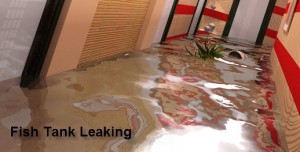Fish Tank Leaking Water Damage Cleanup and Dry-Out NJ, NY, CT, PA
OUR SERVICE AREA
|
Monmouth County Aberdeen Middlesex County Avenel Somerset County Basking Ridge Mercer County Bear Tavern Ocean County Barnegat Bergen County Allendale Essex County Academy Hudson County Arlington Hunterdon County Annandale Morris County Boonton Passaic County Allwood Sussex County Andover Union County Baltusrol Warren County Allamuchy Atlantic County Folsom Burlington County Beverly Camden County Albion Cape May County Anglesea Cumberland County Bivalve Gloucester County Almonesson Salem County Alloway |

Emergency Protocols for Home Aquariums Leak and Flood Repairs
Many people speak of the value of being prepared for any “unanticipated situations” with their fish tank leaking water damage. This is actually better mentioned as preparing for “un-welcomed situations” – as all of these circumstances can be prepared for since you should to realize they could occur.
Truly unforeseen circumstances only occur to unprepared people that lack an overall understanding of fish tanks.
For instance, it might be unforeseen by a starting aquarist that a heating unit that sticks in the on position will raise the water temperature level and possibly eliminate their fish.
If your home or business has experienced fish tank leaking water damage, contact AllStates Restoration. We have crews available 24/7 to dispatch to your New Jersey New York location for fish tank water spilled on carpet, water damage clean up, dry out and repair.
We offer a comprehensive water damage restoration procedure that involves a water damage inspection and a full range of construction services. Call us today at 888-651-2532 for a FREE water damage quote and inspection.
Professional Customer Service

732-722-5211

We’ll help you get your damage clean and restore. All you have to do is Make The Appointment!

- We Provide 24-7 Emergency Service
- Quick Response Time
- FREE Quote
- FREE Inspections
- Certified Technicians – IICRC (Institute of Inspection, Cleaning and Restoration Certification)
Fish Tank Water Damage Inspection
Our technicians provide FREE water damage inspection caused by fish tank leaking of your residential or office and accurately assess the nature and the extent of the water damage.
- Determine Water Sanitation Category
- Determine the Extent of the Damage
- Classify Damages
 For a knowledgeable aquarist, the capacity for this problem is understood, and it then ends up being an undesirable scenario if it occurs. With the intricacy of aquariums growing, (specifically reef tanks) the concern of appropriately handling emergencies becomes of paramount importance.
For a knowledgeable aquarist, the capacity for this problem is understood, and it then ends up being an undesirable scenario if it occurs. With the intricacy of aquariums growing, (specifically reef tanks) the concern of appropriately handling emergencies becomes of paramount importance.
You ought to compare fish tank emergency situations pre-planning to having insurance, however unlike house and automobile insurance, nobody is going to mandate fish tank preparedness for you.
All aquarists need to be reasonably prepared to maintain the lives of the organisms in their care need to some catastrophe strike. The two points at the heart of this concern is the personal duty for the animals in the aquarist’s care, and the animal’s replacement expense. To be completely frank, aquarists do have to perform a cost-benefit analysis on the prospective emergency situation procedures that they plan to implement.
Having no plan is of course the least costly choice – however undoubtedly offers no defense at all. On the other hand, having full devices redundancy with automatic back-up power materials could cost many times more than the animals themselves. Each aquarist has to figure out the risk level that they feel comfy with. Keep in mind though that you are handling the lives of animals that you are only responsible for, so the effort offered towards emergency planning needs to be done with that in mind, not just the replacement cost of the animals.
Simply how widespread is the problem of fish tank emergency situations? Undoubtedly, we all understand the capacity is there to lose animals due to emergencies, however how common of an issue is it? In one online poll, 38 percent of a group of marine aquarists reported having actually lost animals due to a power failure. This is considerable in that much more aquarists had experienced problems, however had the ability to handle the problem without loss of animals. It seems then that it is safe to assume that if you remain active in the fish tank hobby long enough, you will experience an emergency situation with your aquarium eventually.
Type of Fish Tank Emergencies
 Power blackouts are maybe the most frequently experienced fish tank emergency. Most marine fish tanks establish low liquefied oxygen issues within a few hours of the power heading out. Throughout the winter, loss of power might also trigger problems with low water temperature levels. There are a variety of resources discussed later that reduce the problems triggered by power interruptions.
Power blackouts are maybe the most frequently experienced fish tank emergency. Most marine fish tanks establish low liquefied oxygen issues within a few hours of the power heading out. Throughout the winter, loss of power might also trigger problems with low water temperature levels. There are a variety of resources discussed later that reduce the problems triggered by power interruptions.
Fires can be devastating to aquariums. Clearly, aquariums will be harmed if exposed straight to the heat or flames from a fire, however even a small kitchen area fire can kill fish tank residents due to exposure to smoke. Presuming there is no instant threat to human beings, emergency situation procedures to prevent smoke damage consist of briefly isolating the fish tank by switching off filters and air pumps and sealing the whole aquarium in plastic sheeting. Smoke can additionally be left out by then establishing a huge air pump or blower outside the smoke-filled area to blow fresh air into the “seclusion tent” made from plastic sheeting.
Devices failure is likewise a typical causes of fish tank emergency situations. A stuck float switch or examine valve can disable a fish tank’s life support system immediately. A distributing pump could cut off all water flow to an aquarium. Heating systems that stick on or off will trigger interruptions in the aquarium’s water temperature level. Catastrophic water loss through a plumbing failure or a tank leak can be devastating to the animals along with triggering water damage to the home. With big glass aquariums, especially homemade ones, the concern is normally not “will the tank leakage?” but “when will it leak?”.
I am on the phone with my insurance provider company and they are telling me that my property owner’s policy will not cover me from any damage that arises from my aquarium leaking or suffering a major breakdown (a seam breaking).
How can this be? What are individuals doing to make sure that their fishtank doesn’t develop countless dollars worth of damage to their homes?
Is Fish Tank Leaking Water Damage Covered by Insurance?
I had a 150g that broke from a fire that began under the tank due to a timer breakdown which the fire warmed all-time low it broke and did put out the fire.
The water damage was comprehensive from changing all the carpeting in the living-room the hardwood floor in the entire dinning space, cooking area, and entry way, some drywall repair, whole cleaning from fire soot etc … State Farm covered everything except live stock, they did change the tank, Halide lighting, stand and all devices as well as the live rock and sand.
Though no cover on the fish and corals. All said and done it was close to 15K though I did have to pay $500 deductible. I just had conventional property owner’s insurance coverage no floater.
If your dishwasher was to malfunction and triggered water damage I’m sure your insurance provider would cover it so why not a fish tank?
The Aftermath: Added Insurance
When the emergency situation is over, despite the success you’ve had in saving the animals, there may be the extra step of contacting your insurance provider business to file a claim:
Always talk with your representative in advance so that you understand exactly what is covered and exactly what isn’t (live animals are seldom covered, and you may need an unique rider to cover water damage from an aquarium).
Prepare an inventory of your fish tank equipment, both as a list and in pictures or video. Receipts are also useful. Needless to say, don’t store these records in the same area where the inventoried products are!
File the loss in the same manner, specifically if you took steps to reduce the claim (making maintenance and repairs to damaged windows, leasing a generator etc.).
Contact your insurance company as quickly as possible following the loss.
Ways to Repair a Leaky Aquarium.
A leaky aquarium tank can be a big issue. Many leaks only spill a little water at a time. If this problem isn’t repaired, it can cause the whole aquarium breaking or wasting a great deal of water.
Steps 1. Identify where the leak is.
- Look around the fish tank for moisture, if the leak is not evident.
- Look for metal corners that seem separated from the glass, and for sealant extending in the corners.
- Probe the edges, and if you feel water, move upward from that area, until the surface area feels dry.
- Mark the area of the leakage, or where you believe the leakage is, with a felt idea pen.
Steps 2. Drain the water low enough to permit space to clean and dry the location around the leak. If the leakage is very low in the tank, you may have to remove the fish and aquatic plants to a container or other fish tank while repair works are made. Keep in mind that the sealant you seal the leakage with will have to treat before filling up the tank, so plan appropriately to keep your fish and plants healthy.
Steps 3. Scrape the old sealant around the leaking location with a razor scraper. If you are sealing the tank from the inside, beware not to allow any of the old sealant to drop in the tank.
Steps 4. Wipe the area with a clean fabric dampened with acetone to remove any residue and other foreign material. Dry with a paper towel, and enable to completely air dry, about 15 minutes.
Steps 5. Apply nontoxic 100% silicone sealant to the leakage location. Enable the sealant to dry and seal a minimum of 12 hours, but ideally 24 hours.
Steps 6. Refill the tank and examine for leakages. If you have actually gotten rid of fish and plants from the tank, change them when you are positive the leak is repaired.
Aquarium Leaking Tips.
- You may attempt to repair the leakage from the outside of the tank, but normally the repair is more efficient if made on the inside, because water pressure will certainly “tighten up” the seal pressing the silicone out, against the glass, however pushes it far from the glass when used from the exterior.
- Very large aquariums have more water, for this reason more pressure on the joints, and can be very challenging to fix.
- Contact an expert aquarium store for suggested maintenance and repair products. Make sure that if you make use of silicone, it is labeled “nontoxic” and “100 % silicone”. Also see to it that the silicone sealant has NO fungicide in it and is a High Modulus product. Choose the appropriate colour, typically, Clear, White or Black.
- You might use a heat lamp or other portable heat source to help treat the sealant, however do not heat above 110 degrees (F).
- Don’t rush essential tasks!
Warnings.
Do not attempt to move a fish tank which is filled with water, the motion could trigger the joints to misshape and the fish tank to leakage or burst. Never ever use solvent based glues on fish tanks.
What You Need:
- 100 % Silicone Sealant.
- Acetone.
- Single Edged Razor Blades.
- Paper Towels.
- Felt Tip Marker.
To schedule Fish Tank Leaking Water Damage Repairs appointment, call 888-651-2532 or click here.
